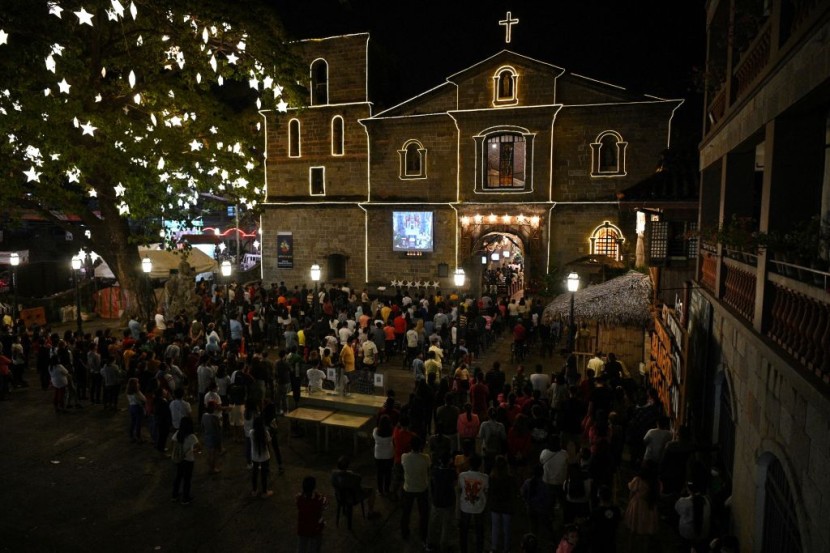One of the iconic facets of Christmas in the predominantly-Catholic Philippines and the global Filipino diaspora is the nine-day Christmas novena Masses, known in Tagalog as "Simbang Gabi" (literally, "Night Mass") or "Misa de Gallo" (Spanish for "Rooster Mass").
The services are attended by Catholics regardless of piety or practical observance, which eventually became one of the Filipino pop culture topics highlighting the December holidays.
The large crowds packing churches - and, at times, overflowing outside them - have also become public security issues that national and local authorities have been considering in their Christmas season plans every year. According to local media, officers of the Philippine National Police (PNP) have been on full alert since earlier this month after Islamic State-affiliated operatives made a bomb attack on the city of Marawi.
History of Christmas Novena in the Philippines
The tradition to have festive services in the last nine days of what the Catholic Church and other Christians call the season of Advent stemmed from the "Rorate Mass," a candlelit early morning service priests offer in the nine days before Christmas - from December 16 to 24 - during the archipelago nation's Spanish era. The masses also coincided with the recitation of the "O Antiphons" in the Catholic Church's daily prayer services outside mass.
The Rorate Mass - offered in honor of the Virgin Mary - came from the first word of the service's Intorit, or processional antiphon, from the Bible's Book of Isaiah: "Rorate caeli desuper, et nubes pluant iustum" ("Drop down dew, ye heavens, from above, and let the clouds rain the Just One").
Filipino urban legend also speculated that the origin of the modern devotion came from the desire of Spanish-era farmers as early as the 17th century to attend church and attend or assist at a Rorate Mass. Still, local historians and church experts dispute this claim.

The Modern Rorate Mass
Two major factors influenced the 21st-century version of the Filipino Christmas novena mass, the first one being the Vatican's disputed liturgical reforms during the Second Vatican Council in the 1960s, which - among other things - allowed the use of the vernacular from the traditional and exclusive use of Latin as the language of the church's religious services prior to the council.
The second factor was the Martial Law era of former Philippine President Ferdinand Marcos Sr., which brought about nightly curfews in the 1970s, thus curtailing the conducting of pre-dawn masses and resorting to vigil services the night before, based on the Judeo-Christian reckoning of time where dusk is the beginning of every liturgical day.
Such factors became the seasonal discussion among Filipino Catholic circles as Christmas approaches, especially because the liturgies of the nine days are caught in between the penitential and anticipatory nature of Advent - with purple as its seasonal color - and the festive expectation of Christmas, where priests wear white- or gold-colored vestments for the services. Some discussions about the Christmas novena masses end up in heated debates over liturgical abuses, the use of Christmas hymns and anthems in Advent, the substance of priests' sermons, and even the time the mass was being offered.
In the latter case, Lingayen-Dagupan Archbishop Socrates Villegas reminded Filipino Catholics that the most important component of the Christmas novena masses was the service itself and not the time it was offered.
"With focus on the essentials, let us remember that the most important component of Simbang Gabi is not the 'time' in which it is celebrated but the participation at 'mass.' The key word is ['mass'] not ['night']," he explained in a catechesis, as quoted by the Philippine Star. "The indispensable part of this nine-day pre-Christmas tradition is the Eucharist."
According to the official Catholic catechism, the Eucharist is the "source and summit" of Christian life and the highest form of prayer and worship.
Villegas added that the novena masses were an indult or privilege granted by the Holy See "to thank God for the gift of Catholic faith and intercede for its preservation in the Philippines."
The indult primarily allowed congregations to recite the Gloria and for priests to wear white vestments during night and dawn masses. However, daytime masses still observe the global norm of omitting the Gloria and wearing purple vestments, as the last nine days of Christmas are still technically within the Advent season.
With this in mind, Villegas told Filipino Catholics not to mind the rubrics and focus on the essentials of the mass they attend, whether night or day.








